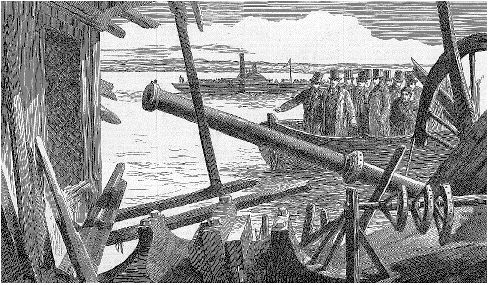The Mouflet family
On Tuesday 3 September 1878, 42-year-old Louis Alexander Mouflet, his wife, Nancy, 32, and their children Alec, 7, and Annie, 5, left their house in Lordship Park, Stoke Newington, for a trip on the Thames. With them was Nancy's younger sister, Phillis Sarah Flatman, who lived nearby in Woodberry Vale. Their journey was to end in East Finchley's St Marylebone Cemetery.
The boat they were to travel on – the paddle-steamer Princess Alice – left London for Gravesend and Sheerness at about 11 a.m., 'many excursionists having been induced by the fine weather to go on board for a holiday trip', as The Times reported next day. On the way back, at about 7.45, in a stretch of river called Gallions Reach, near Woolwich, she collided at full speed with a large screw steamer, the Bywell Castle, travelling in the opposite direction.
The Princess Alice sank so fast that efforts to launch its lifeboats were useless, and 'A scene which has had no parallel on the river ensued,' reported The Times. 'A few – very few – clambered on to the other vessel; nearly all rushed to the after part of the steamer as the bows subsided gradually under water. The shrieks were fearful, and nothing could be done to save life . . . the river for a hundred yards was full of drowning people screaming in anguish and praying for help.'
In fact the Bywell Castle picked up 58 of the pleasure-trippers and about another 100 were picked up by other ships in the area or managed to swim to shore, but some 630 were drowned.
The problem of retrieving and identifying bodies was enormous. Eventually those found at all points on the river were brought together in a large open shed in Woolwich Dockyard. By 9 September they smelled so bad that dock labourers struck for an extra 2/6 per day for moving them, but other workers and 80 soldiers took their place. The South-Eastern Railway Co. announced that bodies would be conveyed free between Woolwich Arsenal and London Bridge, and tracks were run into the dockyard specially for the purpose.

The coroner's jury visits the wreck of the Princess Alice
(from the Illustrated London News of 21 September 1878)
Descriptions of missing persons – including the Mouflets – appeared in the press. Louis, it seems, was in a brown tweed suit and lace-up boots. Auburn-haired Nancy had on a dark blue dress. Alec – dark like his father – was wearing his light-brown knickerbocker suit; Annie – fair like her mother – had on a blue and white striped dress and a light jacket trimmed with fur. Phillis was got up for the outing in a light dress trimmed with red, and high-heeled button boots.
Benefits were organized for the families of the deceased. At Astley's Theatre, for example, 'the Grattan children gave scenes from Richard III., and Miss Virginia Blackwood delivered with much feeling an address in rhymed heroic metre written by Mr. Walter Simms', raising over £60. Even the Comédie-Française sent £50, and by the end of the month a Mansion House appeal had raised over £25,000.
Debate raged about navigation standards on the Thames and whether the Princess Alice had been overloaded, and there were allegations of faulty construction.
In November the official report appeared. The master of the Bywell Castle was acquitted of all blame; the charge of weakness in construction brought against the Princess Alice was dismissed, but the inquiry found against her on the score of navigation. It appeared that 'men whose lives were passed on the river were totally ignorant of its regulations'. Various recommendations were made – but too late for Louis, Nancy, Alec, Annie and Phillis, and for over 600 others.
The Times, September to November 1878
I am grateful to Keith Holland, who tells me that Nancy Mouflet and her sister Phillis Flatman were both daughters of the man credited by Wikipedia with being the first champion flat-racing jockey of Great Britain, Elnathan 'Nat' Flatman (1810–60). Their mother, Susan, and three other siblings survived them.